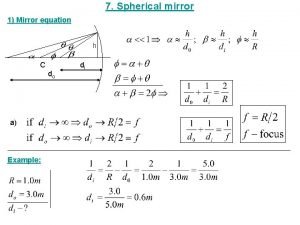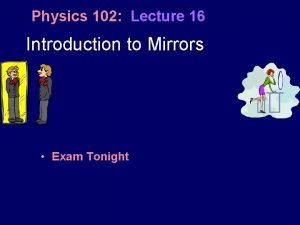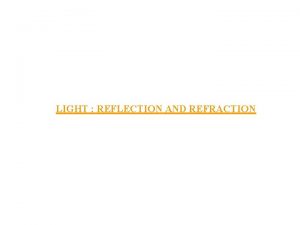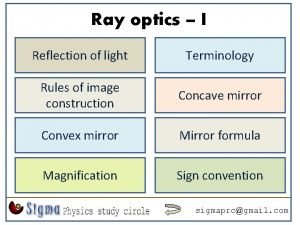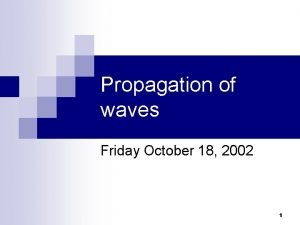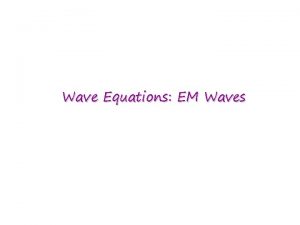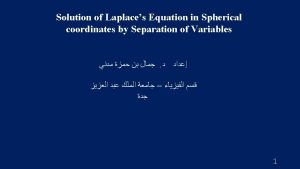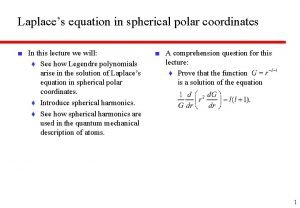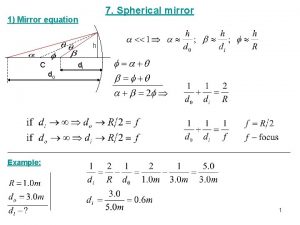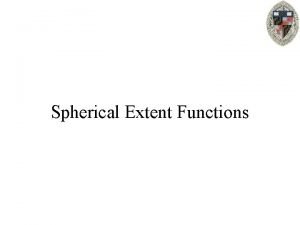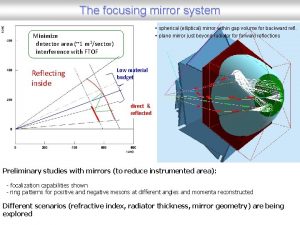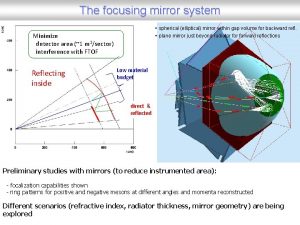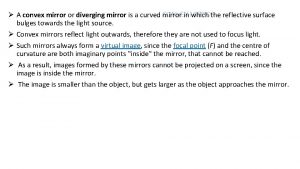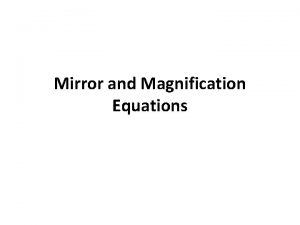7 Spherical mirror 1 Mirror equation h C









- Slides: 9

7. Spherical mirror 1) Mirror equation h C do di Example: 1

2) Magnification C do di Example: What is magnification in the previous example? This image is real, inverted, and 5 times smaller than the object 2

3) Graphical method 3

4) Image and object at various distances C F 2 f=R f=R/2 0 4

magnification image mirror do di m<0 inverted, real concave do>f di>f m>1 0<m<1 upright, virtual concave convex 0<do<f 0<do di<0 -f<di<0 5

Example: You are standing 3. 0 m from a convex security mirror in a store. You estimate the height of your image to be half of your actual height. Estimate the radius of curvature of the mirror. 6

Example: The magnification of a convex mirror is +0. 65 for objects 2. 2 m from the mirror. What is the focal length of this mirror? 7

Example: A shaving/makeup mirror is designed to magnify your face by a factor of 1. 33 when your face is placed 20. 0 cm in front of it. (a) What type of mirror is it? (b) Describe the type of image that it makes of your face. (c) Calculate the required radius of curvature for the mirror. Solution: (a) To produce a larger upright (erect) image requires a concave mirror. (b) The image will be erect and virtual. (c) 8

Example 1: Concave spherical mirrors produce images which A) are always smaller than the actual object B) are always larger than the actual object C) are always the same size as the actual object D) could be smaller than, larger than, or the same size as the actual object, depending on the placement of the object Example 2: Convex spherical mirrors produce images which A) are always smaller than the actual object B) are always larger than the actual object. C) are always the same size as the actual object D) could be larger than, smaller than, or the same size as the actual object, depending on the placement of the object Example 3: A single concave spherical mirror produces an image which is A) always virtual B) always real C) real only if the object distance is less than f D) real only if the object distance is greater than f Example 4: A single convex spherical mirror produces an image which is A) always virtual B) always real C) real only if the object distance is less than f D) real only if the object distance is greater than f 9
 Formula concave mirror
Formula concave mirror Spherical mirror equation
Spherical mirror equation Principal section of spherical mirror
Principal section of spherical mirror Image formed by convex mirror when object is at infinity
Image formed by convex mirror when object is at infinity Reflection terminology
Reflection terminology Line source
Line source Spherical wave equation
Spherical wave equation Laplace equation in spherical coordinates. ppt
Laplace equation in spherical coordinates. ppt Laplace equation in spherical polar coordinates
Laplace equation in spherical polar coordinates Variable thermal conductivity
Variable thermal conductivity
